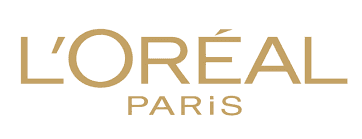Case Study: Market Strategy for L’Oréal’s New Hair Trend Product
Overview
This case study explores the evolving landscape of hair color trends and how L’Oréal can strategically position a new product in a competitive market. It focuses on the rise of unconventional styles such as ombre, tie-dye, and splat, evaluating them for product viability, and recommending a marketing and branding strategy for global rollout.
Objective
To identify the most promising hair trend for new product development and design a tailored launch strategy for L’Oréal that considers market segmentation, regional sensitivities, and digital-first consumer engagement.
Strategy & Execution
Trend Analysis
Ombre: Most popular trend in search volume and YouTube engagement.
Tie-Dye: Gaining momentum, particularly through influencer content and youth appeal.
Splat: Chosen as most viable due to:
Gender neutrality
Flexible application styles (all-over or streaks)
Broader demographic appeal
Target Market Selection
Avoid home hair color segment (deemed unpromising in 2012).
Focus on the professional haircare market with crossover consumer appeal.
Ensure the product is salon-quality but accessible in pricing.
Branding & Positioning
No need for an extreme product name—focus on recognizability and emotional connection.
Utilize trend detection tools and social media listening to gauge longevity and user feedback.
Strategic Recommendations
1. Marketing Mix Strategy
Combine traditional media (billboards, TV) with social media-first strategies.
Launch with:
Dedicated Facebook page
Instagram polls, reels, influencer/model takeovers
YouTube demos by creators showing color transformations
Pinterest boards for style inspiration
2. Influencer Activation
Use ambassadorship campaigns to create buzz.
Partner with stylists and creators for tutorial-based UGC.
Encourage feedback loops to crowdsource improvements.
3. Global Customization
Tailor campaigns per region:
Consider cultural norms, conservatism, and fashion openness.
Adjust pricing and distribution by market conditions and competitor behavior.
Market Differentiation Strategy
L’Oréal's edge lies in hyper-local customization, enabling:
Relevance to diverse consumers
Competitive advantage against one-size-fits-all rivals
Seamless alignment with global expansion goals
Result: L’Oréal’s approach contributed to its global growth, culminating in over €5.54 billion in operating revenue, reinforcing its position as the world’s largest cosmetics brand.
Tools & Methodologies Used
Social Media Listening
Competitive Trend Analysis
Multinational Go-To-Market Strategy
Influencer Marketing Framework
Hybrid Marketing Mix Design
